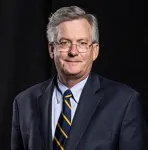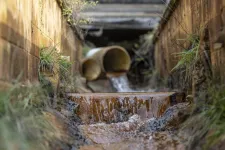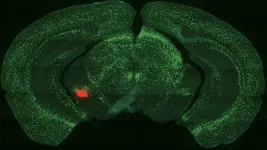“We need storage to absorb the fluctuating energy from solar and wind, and most people are interested in batteries and other kinds of electrical storage. But we were wondering whether there's any opportunity to use geothermal energy storage, because heating and cooling is such a predominant part of the energy demand for buildings,” said first author A.T.D Perera, a former postdoctoral researcher at Lawrence Berkeley National Laboratory (Berkeley Lab), now at Princeton University’s Andlinger Center for Energy and Environment.
“We found that, with ATES, a huge amount of energy can be stored, and it can be stored for a long period of time,” Perera said. “As a result, the heating and cooling energy demand during extreme hot or cold periods can be met without adding an additional burden on the grid, making urban energy infrastructure more resilient.”
The study, published this week in Applied Energy, is one of the first examinations of how ATES could fit into the larger goal of decarbonizing U.S. energy systems by storing intermittent renewable energy to use when the sun isn’t shining and the turbines aren’t spinning. After building a comprehensive technological and economic simulation of an energy system, the authors found that ATES is a compelling option for heating and cooling energy storage that, alongside other technologies such as batteries, could help end our reliance on fossil fuel-derived backup power and enable a fully renewable grid.
Putting thermodynamics to work
ATES is a delightfully simple concept that leverages the heat-absorbing property of water and the natural geological features of the planet. You simply pump water up from existing underground reservoirs and heat it at the surface in the summer with environmental heat or excess energy from solar, or any time of the year with wind. Then you pump it back down.
“It actually stays fairly hot because the Earth is a pretty good insulator,” explained co-author Peter Nico, deputy director of the Energy Geosciences Division at Berkeley Lab and lead of the Resilient Energy, Water and Infrastructure Domain. “So then when you pull it up in the winter, months later, that water's way hotter than the ambient air and you can use it to heat your buildings. Or vice versa, you can pull up water and let it cool and then you can put it back down and store it until you need cooling during hot summer months. It's a way of storing energy as temperature underground.”
ATES is not yet widely used in the U.S., though it is gaining recognition internationally, most notably in the Netherlands. One major perk is that these systems get “free” thermal energy from seasonal temperature changes, which can be bolstered by the addition of artificial heating and cooling generated by electricity. As such, they perform very well in areas with large seasonal fluctuations, but have the potential to work anywhere, so long as there is wind or solar to hook up to. In regards to other impacts, ATES systems are designed to avoid impinging upon critical drinking water resources – often the water used is from deeper aquifers than the drinking water supply – and do not introduce any chemicals into the water.
How does it perform?
To get some concrete numbers estimating how much energy ATES could save on the U.S. grid, and how much it would cost to deploy, the team designed a case study using a computational model of a neighborhood in Chicago. This virtual neighborhood was composed of 58 two-story, single-family residence buildings with typical residential heating and cooling that were hooked up to a simulation of an energy grid with multiple possible energy sources and storage options, including ATES. Future climate projections were used to understand how much of the neighborhood’s total energy budget is taken up by heating and cooling demands currently, and how this might change in the future. Finally, a microgrid simulation was designed for the neighborhood that included renewable energy technologies and ATES to evaluate the technoeconomic feasibility and climate resilience. Putting all these factors together into one model would not have been possible without the team’s diverse expertise across the energy geosciences, climate science, and building science fields.
The results showed that adding ATES to the grid could reduce consumption of petroleum products by up to 40%, though it would cost 15 to 20% more than existing energy storage technologies.
“But, on the other hand, energy storage technologies are having sharp cost reductions, and after just a few years of developing ATES, we could easily break even. That’s why it’s quite important that we start to invest in this research and start building real-world prototype systems,” said Perera.
“ATES does not need space compared with above-ground tank-based water or ice storage systems. ATES is also more efficient and can scale up for large community cooling or heating compared with traditional geothermal heat pump systems that rely on heat transfer with the underground earth soil,” added Tianzhen Hong, a co-author and senior scientist at the Building Technology and Urban Systems Division.
Another major benefit of ATES is that it will become more efficient as weather becomes more extreme in the coming years due to climate change. The hotter summers and harsher winters predicted by the world’s leading climate models will have many downsides, but one upside is that they could supercharge the amount of free thermal energy that can be stored with ATES. “It’s making lemonade, right? If you're going to have these extreme heat events, you might as well store some of that heat for when you have the extreme cold event,” said Nico.
ATES will also make the future grid more resilient to outages caused by high power demands during heat waves – which happen quite often these days in many high-population U.S. areas, including Chicago – because ATES-driven cooling uses far less electricity than air conditioners, it only needs enough power to pump the water around.
“It's very much a realistic thing to do and this work was really about showing its value and how the costs can be offset,” said Nico. “This technology is ready to go, so to speak. We just need to do it.”
This research was funded by the Department of Energy’s Geothermal Technologies Office.
# # #
Founded in 1931 on the belief that the biggest scientific challenges are best addressed by teams, Lawrence Berkeley National Laboratory and its scientists have been recognized with 16 Nobel Prizes. Today, Berkeley Lab researchers develop sustainable energy and environmental solutions, create useful new materials, advance the frontiers of computing, and probe the mysteries of life, matter, and the universe. Scientists from around the world rely on the Lab’s facilities for their own discovery science. Berkeley Lab is a multiprogram national laboratory, managed by the University of California for the U.S. Department of Energy's Office of Science.
DOE's Office of Science is the single largest supporter of basic research in the physical sciences in the United States, and is working to address some of the most pressing challenges of our time. For more information, please visit energy.gov/science.
END






